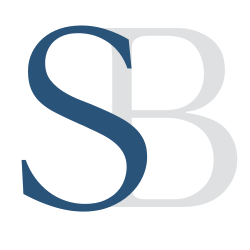As the 2025 open enrollment period approaches, employers sponsoring group health plans must ensure they are up-to-date with compliance changes that could impact their health plans’ design and administration. Staying informed about these changes is crucial for maintaining compliance and effectively communicating any updates to plan participants. This 2025 open enrollment compliance guide is here to help you navigate the new year.
Key Notices for Open Enrollment
Providing the necessary notices during open enrollment is a critical compliance step. Including these notices in your open enrollment materials can streamline administration and ensure participants are well-informed.
Summary of Benefits and Coverage (SBC)
Employers are required to provide a Summary of Benefits and Coverage (SBC) to applicants and enrollees during open enrollment. This document helps participants understand their benefits and coverage options. For self-funded plans, the employer is responsible for providing the SBC, while for insured plans, the issuer typically provides it. Including an updated SBC with your open enrollment materials ensures compliance with this requirement.
Medicare Part D Notices
Employers must provide an annual notification to Medicare-eligible individuals before October 15, informing them whether their prescription drug coverage is creditable or non-creditable. This notice helps participants make informed decisions regarding their Medicare Part D enrollment.
Annual CHIP Notices
For employers in states offering premium assistance for employer-sponsored coverage, it’s required to send an annual Children’s Health Insurance Program (CHIP) notice to all employees residing in those states. Utilizing the most recent model notice ensures that you are providing accurate and compliant information.
Initial COBRA Notices
Employers must provide initial COBRA notices to new participants and certain dependents within 90 days of coverage starting. This notice informs them of their rights under the Consolidated Omnibus Budget Reconciliation Act (COBRA). The initial notice can be included in the Summary Plan Description (SPD) or distributed separately.
HIPAA Notices
Under the Health Insurance Portability and Accountability Act (HIPAA), employers must provide certain notices to plan participants. The Special Enrollment Rights Notice must be provided at or before the time of enrollment, informing participants of their rights to enroll in the plan under special circumstances, such as loss of other coverage or the addition of a new dependent. It is often included in the SPD.
Privacy Notices are also required. HIPAA mandates that covered entities provide a Notice of Privacy Practices to new enrollees. Self-insured plans must maintain and distribute their own notices, while fully insured plans have limited responsibilities. Providing this notice ensures participants are aware of how their protected health information (PHI) is used and disclosed.
Wellness Program Notices
Employers offering wellness programs must provide specific notices to participants, depending on the program’s design. The HIPAA Wellness Program Notice is required for health-contingent wellness programs and informs participants of the availability of reasonable alternative standards or waivers for obtaining program rewards. If the wellness program includes health-related inquiries or medical examinations, employers must provide an ADA Wellness Program Notice under the Americans with Disabilities Act. This notice explains what medical information will be collected, how it will be used, who will receive it, and how it will be kept confidential. These notices should be provided when the wellness program is communicated to employees and before any health information is collected.
Women’s Health and Cancer Rights Act (WHCRA) Notices
Employers must provide notices under the WHCRA at enrollment and annually, informing participants of their rights related to mastectomy benefits. This ensures participants are aware of coverage for reconstructive surgery and other post-mastectomy benefits.
Summary Annual Reports (SARs)
For plans that file Form 5500, employers must provide a Summary Annual Report (SAR) to participants. This report summarizes the plan’s financial information and must be provided within nine months after the plan year ends, or within two months after the extension period if a Form 5500 filing extension was obtained.
Plan Design Updates and Compliance Changes
Understanding and implementing the latest compliance changes is essential for employers to maintain compliant and competitive health plans.
Affordable Care Act (ACA) Affordability Percentage
The ACA affordability percentage increases to 9.02% for plan years starting in 2025. Employers must ensure that at least one health plan option offered to full-time employees meets this new affordability standard. Since employers typically do not know employees’ household incomes, the IRS provides safe harbors—such as the Form W-2, rate-of-pay, and federal poverty line safe harbors—to determine affordability.
Out-of-Pocket Maximums
For plan years beginning on or after January 1, 2025, the ACA sets new out-of-pocket maximums: $9,200 for self-only coverage and $18,400 for family coverage. Employers should review and adjust their plan’s out-of-pocket maximums accordingly to ensure compliance. Additionally, High Deductible Health Plans (HDHPs) compatible with Health Savings Accounts (HSAs) have lower maximums—$8,300 for self-only coverage and $16,600 for family coverage in 2025—which must be considered when designing plan benefits.
Health Flexible Spending Account (FSA) Contribution Limits
The current Health FSA contribution limit for 2024 is $3,200, but the IRS has not yet announced the limit for 2025. Employers should monitor IRS updates and adjust employee contribution limits once the new amount is released. Communicating the updated limit during open enrollment is important for participant planning.
High Deductible Health Plan (HDHP) and Health Savings Account (HSA) Limits
The IRS has increased the limits for HSAs and HDHPs for 2025. HSA contribution limits rise to $4,300 for self-only coverage and $8,550 for family coverage. HDHP minimum deductibles increase to $1,650 for self-only coverage and $3,300 for family coverage. The HDHP out-of-pocket maximums also increase to $8,300 for self-only coverage and $16,600 for family coverage. Employers need to adjust their HDHPs to reflect these new limits and inform employees of the updated HSA contribution limits during open enrollment.
Expiration of Temporary HDHP Provisions
Certain temporary provisions for HDHPs are expiring. After December 31, 2024, HDHPs can no longer cover COVID-19 testing and treatment without the deductible being met. Additionally, starting January 1, 2025, pre-deductible coverage for telehealth services will no longer be allowed in HDHPs for HSA eligibility purposes. Employers must update plan designs to comply with these changes and communicate any modifications to participants.
Preventive Care Requirements
The ACA mandates coverage of specific preventive services without cost-sharing when provided by in-network providers. New preventive services, such as screenings for anxiety disorders in adults (including pregnant and postpartum individuals), must be covered without cost-sharing for plan years beginning on or after June 30, 2024. Employers should verify that their plans include the latest recommended preventive services to remain compliant.
Excepted Benefit Health Reimbursement Arrangements (EBHRAs)
The contribution limit for EBHRAs increases to $2,150 for plan years beginning in 2025. Employers should decide on the EBHRA contribution amount for the upcoming year and communicate this information to employees during open enrollment.
Additional 2025 Open Enrollment Compliance Considerations
Staying ahead of compliance requirements protects your organization from penalties and ensures a smooth open enrollment process.
Mental Health Parity and Addiction Equity Act (MHPAEA)
The MHPAEA requires group health plans to provide parity between medical/surgical benefits and mental health or substance use disorder benefits, including financial requirements and treatment limitations. Plans must conduct and document comparative analyses of Nonquantitative Treatment Limitations (NQTLs) to demonstrate compliance. Employers should confirm with their plan issuers or administrators that these analyses are updated for 2025.
Prescription Drug Coverage Creditable Determination
Changes in Medicare Part D under the Inflation Reduction Act may impact whether employer-sponsored prescription drug coverage is considered creditable. Employers must determine if their prescription drug coverage is creditable for 2025 and provide necessary notices to Medicare-eligible individuals. The Centers for Medicare and Medicaid Services (CMS) has allowed the continued use of the simplified determination method for 2025, which employers can utilize in making their determinations.
Plan Documentation and Participant Communication
Clear communication and accurate documentation are vital for compliance and participant understanding.
Summary Plan Descriptions (SPDs) and Summaries of Material Modifications (SMMs)
Employers must provide an SPD to new participants within 90 days of coverage starting. SPDs should be updated every five years if there have been changes or every ten years regardless of changes. Any modifications to the plan should be communicated through an updated SPD or an SMM to ensure participants are aware of their benefits and any alterations.
Grandfathered Plan Notices
If an employer’s plan has grandfathered status under the ACA, they must include a statement of this status in plan materials, such as SPDs and open enrollment documents. This informs participants that the plan may not include certain consumer protections that apply to other plans.
Final Preparations for Open Enrollment
As the open enrollment period nears, employers should review all open enrollment materials to ensure they accurately reflect plan terms, benefits, and costs for the 2025 plan year. Including all required notices in these materials can help reduce administrative burdens and ensure compliance. Clear communication of any plan changes is essential to facilitate participant understanding and engagement.
By proactively addressing these updates and requirements, employers can navigate the 2025 open enrollment period effectively, ensuring compliance and providing valuable benefits to their employees.
About Sterling Benefits
At Sterling Benefits, our mission has always been navigating our clients through the complex benefits marketplace. We are dedicated to delivering transparency in the insurance market, helping clients understand plan designs, and expertly navigating them through insurance complexities. Our core values include honesty, integrity, loyalty, and a passion for exceeding expectations.
Contact Us
For more information about this acquisition or to learn more about our services, please contact us at 610-742-2347 or visit us at sterlingben.com.
Follow Us For The Latest News
Committed to Your Employees’ Health and Happiness.







